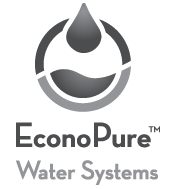Which NF membrane do I need?
There is a spectrum of nanofiltration (NF) membrane available for the LFNano™. Six (6) different NF membrane are available currently. They range from very ‘tight’ to very ‘loose’. The terms ‘tight’ and ‘loose’ are not precise as any osmotic membrane does NOT exclude contaminants by physical pore size. That is what filters do. Osmotic membranes exclude dissolved contaminants based on chemical charge. So a ‘tight’ NF membrane will act similar to a ‘loose’ RO membrane or a brackish water reverse osmosis (BWRO) membrane. A ‘loose’ NF membrane will remove far less monovalent ions while still achieving a high polyvalent removal.
What does recovery have to do with removal?
Recovery is the ratio of the permeate flow to the influent flow. If an application does not have an inexpensive outlet for disposing of the concentrate stream, a high recovery can be preferable. All the foulants in the source water, and rejected from the feedwater, remain in the concentrate. So the higher the recovery, the higher the concentration of the reject water. So the removal percentages from the membrane selection table apply not to the feed water concentration but to the reject concentration which is higher than the feed water.
| Membrane |
% MgSO4 Rejection |
% NaCl Rejection |
| EPWS NF6A |
99.5 |
90.0 |
| EPWS NF5A |
99.0 |
55.0 |
| EPWS NF4A |
98.5 |
35.0 |
| EPWS NF3A |
99.5 |
40.0 |
| EPWS NF2A |
99.5 |
46.0 |
| EPWS NF1A |
85.0 |
15.0 |
As an example, applying a EPWS NF1A to a solution of water and 10,000 mg/L of sodium chloride (NaCl) would appear to take the NaCl level to 1,500 mg/L in the permeate. However this is not correct as the removal percentage must be applied to the concentrate level of salt and that will be dependent on the recovery level. For a 50% recovery operation, the concentrate will be twice the salt level of the feed water. Therefore the use of the EPWS NF1A will take the salt down to 3,000 mg/L rather than 1,500. So, for higher recovery applications a ‘tighter’ NF membrane must be selected to remove significant dissolved solids.
What if I am using the LFNano™ as pre-treatment?
If a reverse osmosis stage is to follow, the removal of monovalent ions (like Na and Cl) is less important so a ‘looser’ membrane will be preferable. As even the loosest NF membrane still removes a significant amount of hardness or scaling causing salts this will serve the application well in keeping down the osmotic pressure while softening the water.
Are the removal percentages going to be realized in my water?
Except for distilled water all water is different. The interactions between different combinations of dissolved solids in the water will affect the membrane removal levels. The table shows the membrane performance on very specific solutions run at very specific operating conditions to give an indication of the removal, however those conditions are almost never the same as yours. However, the test conditions are indicative and will reflect general qualities of the membrane with specifics to be worked out in pilot testing.
What about system capacity?
The LFNano™ system can be run at a wide variety of capacity settings. The more pressure applied, the greater the flow rate from the system. However, the higher the rate of flow, the more frequent the need for maintenance or membrane cleaning. Remember this is the “low” fouling NF not the “no” fouling NF! So the fouling will depend on the level of solids in the water and the production rate or flux (measure of throughput per unit of membrane area). The tradeoff must be made between maintenance and flow rate.


